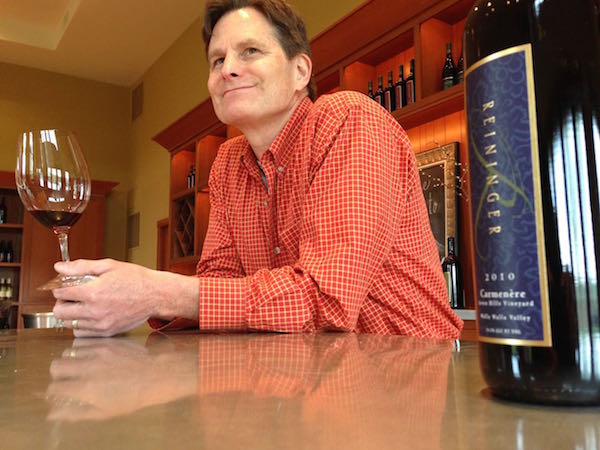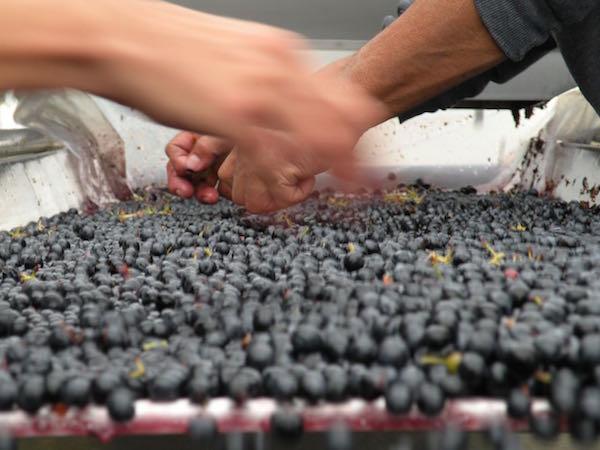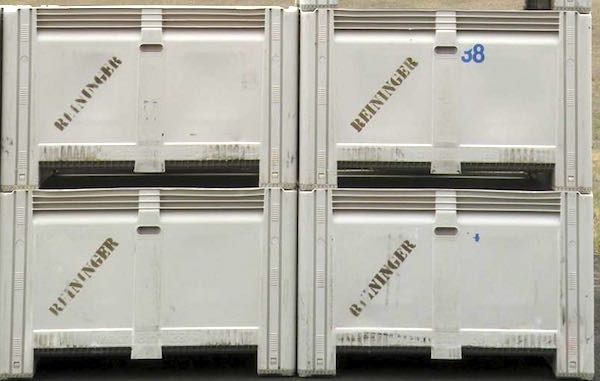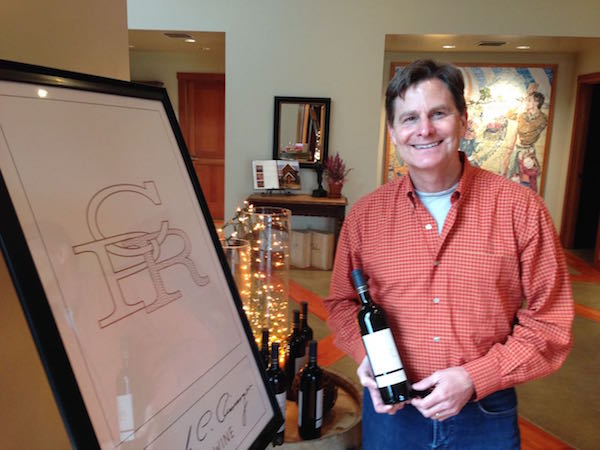
WALLA WALLA, Wash. – This fall will mark Chuck Reininger’s 20th harvest in the Walla Walla Valley.
The owner and winemaker for Reininger Winery and Helix by Reininger arrived in his wife’s hometown with brewing on his mind, but he quickly caught the wine bug and has never looked back.
Reininger was in the second wave of wineries to open in the mid-1990s in the Walla Walla Valley and quickly established himself as one of the most talented winemakers in Washington.
We recently caught up with Reininger to chat about what fuels his passion for winemaking and some of his new and interesting projects.
Here’s the interview:
[powerpress]
Origins of Reininger Winery

Reininger grew up in the Bellevue area and went to college at the University of Puget Sound in Tacoma. Wine was far from his mind, which was focused on higher goals: mountain climbing.
For several years, Reininger was a climbing guide on Mount Rainier, as well as other mountains in the Cascades, in Alaska and in Argentina. He has summited Rainier 82 times, though none in recent years.
Reininger was thinking about launching a microbrewery when his girlfriend, Tracy, announced she was driving to her native Walla Walla to look for a house. He tagged along, and they found a house – which led to nuptials.
Tracy Reininger’s roots run deep here in the Walla Walla Valley. She is a fifth-generation Walla Walla native, and ancestors on both sides of her family arrived here via the Oregon Trail.
In 1992, he helped during harvest at Waterbrook Winery, which led to him becoming a home winemaker in 1993. All of this was sparked by his love of nature and his interest in regional geology and its connection to the soil and the vines.
“Before wine was even a glimmer in my eye, I learned about the Bretz floods, otherwise known as the Missoula floods,” Reininger said. “J Harlen Bretz figured out the whole scenario of the ancient floods, so I understood where the soils came from. When I started doing home winemaking, a light turned on.”
Reininger could teach a college course on the Ice Age floods, a series of cataclysmic events that took place about 15,000 years ago and reshaped Eastern Washington, particularly the Columbia Valley and the Columbia Gorge.
In 1997, Reininger was ready to turn pro, so he launched Reininger Winery
Reininger Winery first at Walla Walla airport

Today, nearly two-dozen wineries call the Walla Walla airport home. Most use World War II-era buildings, while some are in newer buildings that are part of the Port of Walla Walla’s incubator program.
But back in 1997, there were no wineries at the airport – until Reininger showed up. He set up shop at a 1,700-square-foot building that had once been the “crash house” at the end of the runway and was placed on the foundation of the former movie theater. Reininger jokingly called it “Shackteau Reininger.”
That first year, Reininger made Cabernet Sauvignon, Merlot and Cabernet Franc, and he quickly focused on using only Walla Walla Valley grapes for his wines. Those who came before him thought he was nuts for not diversifying his fruit sources to the broader Columbia Valley.
“Some of the original winemakers told me I was absolutely crazy to do that because of the Arctic freezes that slide to the west of the Rockies,” Reininger said. “But I decided to be true to my convictions. They proved to be right.”
In January 2004, a cold snap hit Washington wine country. One evening, temperatures dropped from a frigid 18 degrees to minus-17 in a couple of hours, and the Walla Walla Valley was devastated, with most of its wine grape crop wiped out.
“Walla Walla tends to get harder hit on this northern Arctic freezes than the rest of Eastern Washington,” Reininger said. “(In 2004) we were expecting about 90 tons of fruit out of Walla Walla – and ended up with a half-ton.”
That’s enough to make about 30 cases of wine.
Fortunately, that year also was the launch of Helix, a winery started by Reininger’s brothers-in-law. His wife’s side of the family has roots in Helix, Ore., a tiny community halfway between Walla Walla and Pendleton. Reininger ended up a partner – and the winemaker – for Helix.
“I wanted to be true to my convictions of Reininger being Walla Walla Valley fruit, so we decided to differentiate it by making Helix our Columbia Valley label,” he said.
For Helix, Reininger works with grapes from the Horse Heaven Hills, Wahluke Slope and greater Columbia Valley. It worked out well because in 2004, only one wine was released under the Reininger label. It was called “Anomaly” and was a blend of that half-ton of Walla Walla Valley Carménère he got, plus some Cabernet Sauvignon from famed Cold Creek Vineyard north of the Yakima Valley. Reininger made 118 cases of it. He changed the Reininger label for one year by putting it on the bottle sideways, taking the vine pattern off of it (there were few vines in the valley that year) and making the background white to remember the freeze.
Moving west

It didn’t take long for Reininger to outgrow his airport “shackteau,” so he found two potato sheds west of downtown Walla Walla. They were right on the highway into town, making it perfect for capturing the growing wine tourism crowd that flocked to Walla Walla throughout the year.
The renovated buildings became Reininger Winery’s new 12,000-square-foot production facility and tasting room. Reininger crushed his first grapes there in 2004 and opened the tasting room in 2005. It has a definitive Walla Walla Valley flavor to it.
“We tell the story of the valley through our tasting room,” he said. “The countertop on the tasting bar is columnar basalt, which is the foundation of our soils. We have vines woven through barrel staves that held Reininger Cabernet Sauvignon from both the Columbia Valley and Walla Walla Valley to represent the two different labels.”
Everything was looking great for Reininger Winery with its new building and expanded production. More people than ever were stopping in because of its prime location on the highway into town.
Until the state moved the highway.
In June 2010, a new Highway 12 opened just north of Reininger Winery, complete with four lanes. It was great for travelers – but bad for all the wineries that had set up shop on what now is known as “Old Highway 12.”
Reininger had it better than most. His winery was just one minute from the new highway, and the back of his winery – and a huge sign that says “Reininger Winery” – is an easy glance from Highway 12.
But getting casual visitors to turn right was a chore, and business suffered.
“We were the fortunate ones,” Reininger said optimistically. “We only had a 30 percent drop in tasting room sales when that opened up. But we’ve recovered from that. We’re finally back on GPS.”
Reininger continues to try new things. His latest project is a new label called “CPR.” Those are his initials, but he jokes that the wines are “heart-thumpingly good.”
“It’s very tiny, a special-projects label,” Reininger said. “It’s wherever our imagination carries us.”
The first wine released under CPR is an unusual blend of six grape varieties from six different vintages. Once the blend was put together, Reininger bottled 18 percent of it, then replaced that 18 percent with two more vintages of another grape variety. So the second release – coming out in May – will be seven different grape varieties from eight vintages.
“It’s fun to see how just blending in that little bit of extra wine every year rejuvenates the project and brings nice youth and vigor to the wine,” he said. “Yet at the same time, you get this aged background in it. It’s really exciting.”
Reininger plans to repeat the process every year, which will make the wine a little more complex and its average age a little older.
“We hope to keep this project going for 20 or 30 years,” he said with a grin.
Reininger might not do much mountain climbing anymore, but that doesn’t keep him from reaching for new heights.

Leave a Reply